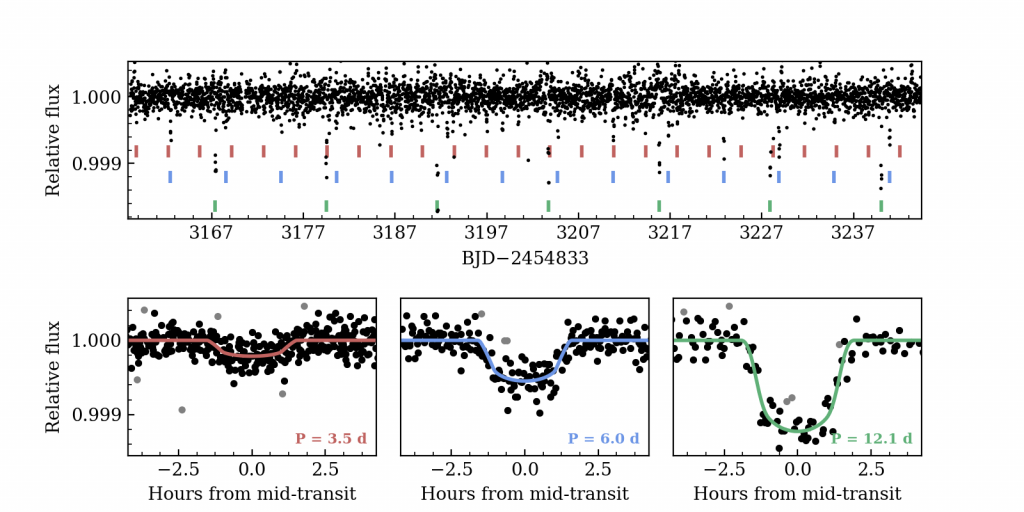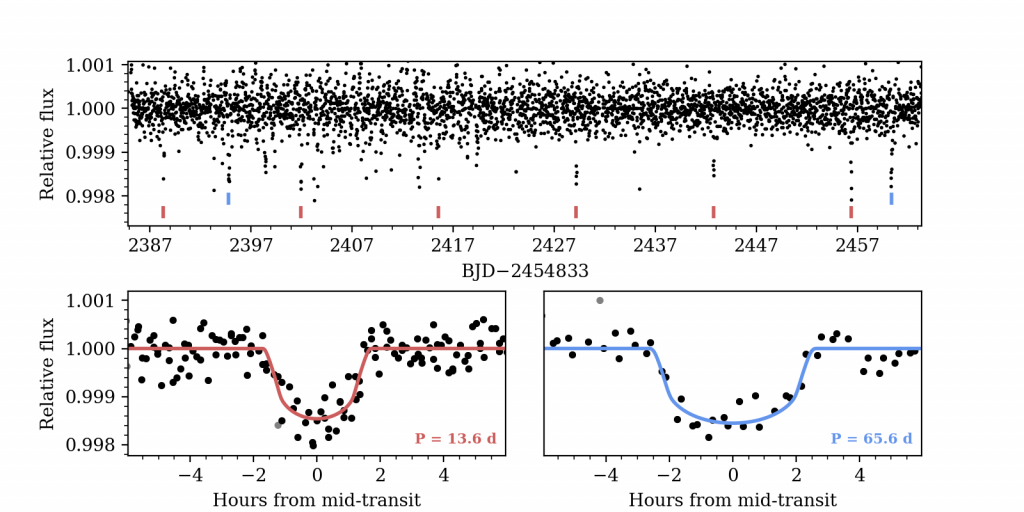

Exoplanetary Astronomy is the study of planetary systems around stars other than our sun. Although the study of exoplanets has only been around for about 25 years, rapid progress had been made within the field with respect to the detection and characterization of new planets. This is mainly due to the presence of new instruments such as the Kepler space telescope and its immediate successor TESS (Transiting Exoplanet Survey Satellite).
At ACCIMT, we have used the data released from the Kepler spacecraft to find new exoplanets, and at present we have had success in detecting two new planetary systems around what are known as Orange dwarf stars. The method of detection utilized to find these planets is what is known as the transit method, where the variation in light from a star as an exoplanet passes in front of it is used to discern its existence and determine its properties. One of the system’s we found contains two planets with orbital periods of 13 and 65 days with sizes of 2.6 and 2.7 Earth-radii respectively, and we have determined them to be what are called “sub-Neptune” type exoplanets (planet that are most likely gaseous like Neptune). The second system we found contains three planets with orbital periods of 3.5, 6 and 12 days, with sizes of 1.1, 2.2 and 3.2 Earth-radii respectively. This second system contains a definite rocky planet orbiting very close to the host star as well as a definite gas giant orbiting further away. Further studies are being conducted on these systems as well as investigations into new stars that are possible candidates for new planetary systems. We show below the transit light curves that were obtained for the two systems mentioned above, which is evidence of these new planets which we have found.
Team members: S. Gunasekara (ACCIMT), M. Herath (ACCIMT)
